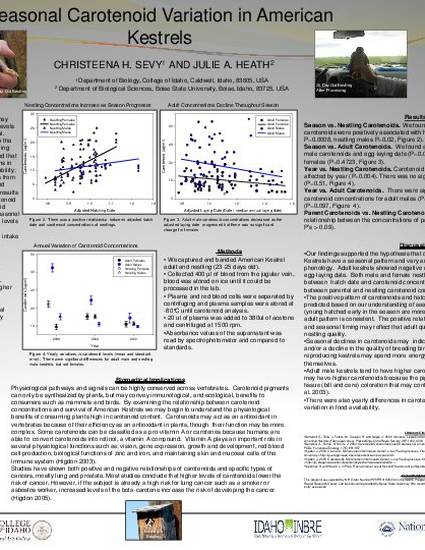
Carotenoids are micronutrient pigments produced by plants that may convey immunological benefits to consumers. Animals with high levels of carotenoid intake may have improved health and higher survival. American Kestrels (Falco sparverius) from broods hatched early in the breeding season are more likely to survive and return to the breeding population than birds hatched later in the season. We hypothesized that breeding adults and nestlings may be affected by seasonal patterns in primary productivity that lead to changes in prey quality and availability; therefore affecting carotenoid intake. We collected blood samples from American Kestrels breeding in nestboxes south of Boise, Idaho and measured carotenoid concentrations via spectrophotometry. Our results supported our hypothesis that there are seasonal patterns in carotenoid availability, but trends did not match our predictions. Adult birds did show seasonal declines in carotenoids, while nestlings showed seasonal increases. Further, adult carotenoid levels did not predict nestling levels and there was high annual variation in carotenoid concentrations. Circulating carotenoids may be affected by factors other than food intake (i.e., hormones) making trend difficult to interpret.
Available at: http://works.bepress.com/julie_heath/1/
